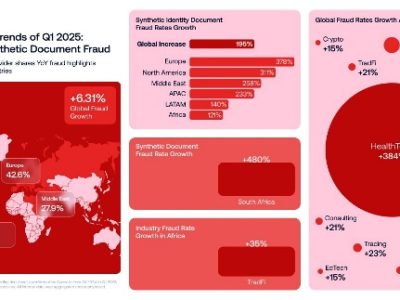How ERP solutions deliver real-time insights into production processes so that companies can track orders, monitor production progress and address bottlenecks.
Real-time visibility is crucial to the manufacturing sector. Not only does it allow companies to monitor activities as they happen, but it also optimises the allocation of resources to ensure adherence to production schedules.
RELATED: Why ERP solutions are the building block for South Africa’s manufacturing sector
Possessing the ability to identify bottlenecks or plan deviations early is essential to operations running smoothly. The same is true of how real-time insights can detect quality issues or defects that can then be addressed quickly.
These processes ultimately reduce waste and save businesses money.
A high level of visibility also allows manufacturers to provide timely and accurate updates to customers about their orders, thereby building trust and loyalty to the brand.
Ashley Ellington, director at South African Sage business software and implementation specialist Times 3 Technologies (T3T), says all departments within a manufacturing company stand to benefit.
“Production managers can monitor progress, identify any hiccups and allocate resources efficiently, while supply chain managers gain real-time insights into inventory levels, order statuses and demand patterns.
“Quality control teams, meanwhile, will be able to ensure the standard of goods remains constant throughout the production process.”
In the finance office, expenses associated with production can be tracked and adjusted to stay within budget.
Today’s manufacturing sector can gain numerous benefits from an integrated Enterprise Resource Planning (ERP)Solution, business tools that effectively consolidate functions such as human resources, finance and accounting, inventory and project management into a single database accessible to different departments in real-time.
Ellington explains that ERP solutions offer a range of functionalities that enhance manufacturing activities. These include:
- A single set of data providing a holistic view of all business activities across production activities;
- Integration with sensors, Internet of Things (IoT) devices and automated data collection tools placed on machines and production lines to capture production rates, machine performance and quality metrics;
- Customised dashboards and reports that reflect key production metrics, progress indicators and potential bottlenecks;
- Order tracking from placement to fulfilment;
- Production monitoring of current progress against established targets and schedules to gauge performance and address problem areas;
- Alerts and notifications when deviations from planned processes occur; and
- Resource allocation monitoring may include machine availability, employee workloads and use of materials.
ERP solutions like Sage X3 are widely used by South African manufacturers, particularly among those in the mid-size bracket.
While not as complex as solutions implemented at bigger companies, the platform still boasts tremendous functionality.
“The ERP streamlines production management through software that offers shop floor and quality control aspects. BOM and production planning are also covered,” Ellington says.

T3T Ashleigh
“Additionally, the solution is geared towards supply chain management aspects like purchasing, inventory and warehousing, sales and customer service, not to mention financial functionality.”
T3T is a Platinum Business Partner for Sage in South Africa and works with the company to develop add-ons, including those for Sage X3.

ERP manufacturing
One example is Bulk Stocktake Import, which simplifies the upload of stock count Information into Sage X3. Another is the Delivery Manifest Add-On, a module created to integrate driver, logistics, and warehouse functionality into a single function within Sage X3.

ERP manufacturing
Ellington says the rise of ERPs has put manufacturers at a huge advantage in terms of their ability to be proactive.
Decisionmakers can now easily detect trends or shortcomings in real time and adapt their strategies accordingly. It’s not only being responsive to any immediate challenges that crop up but also being able to benefit from favourable market conditions to stay ahead of the competition.





























